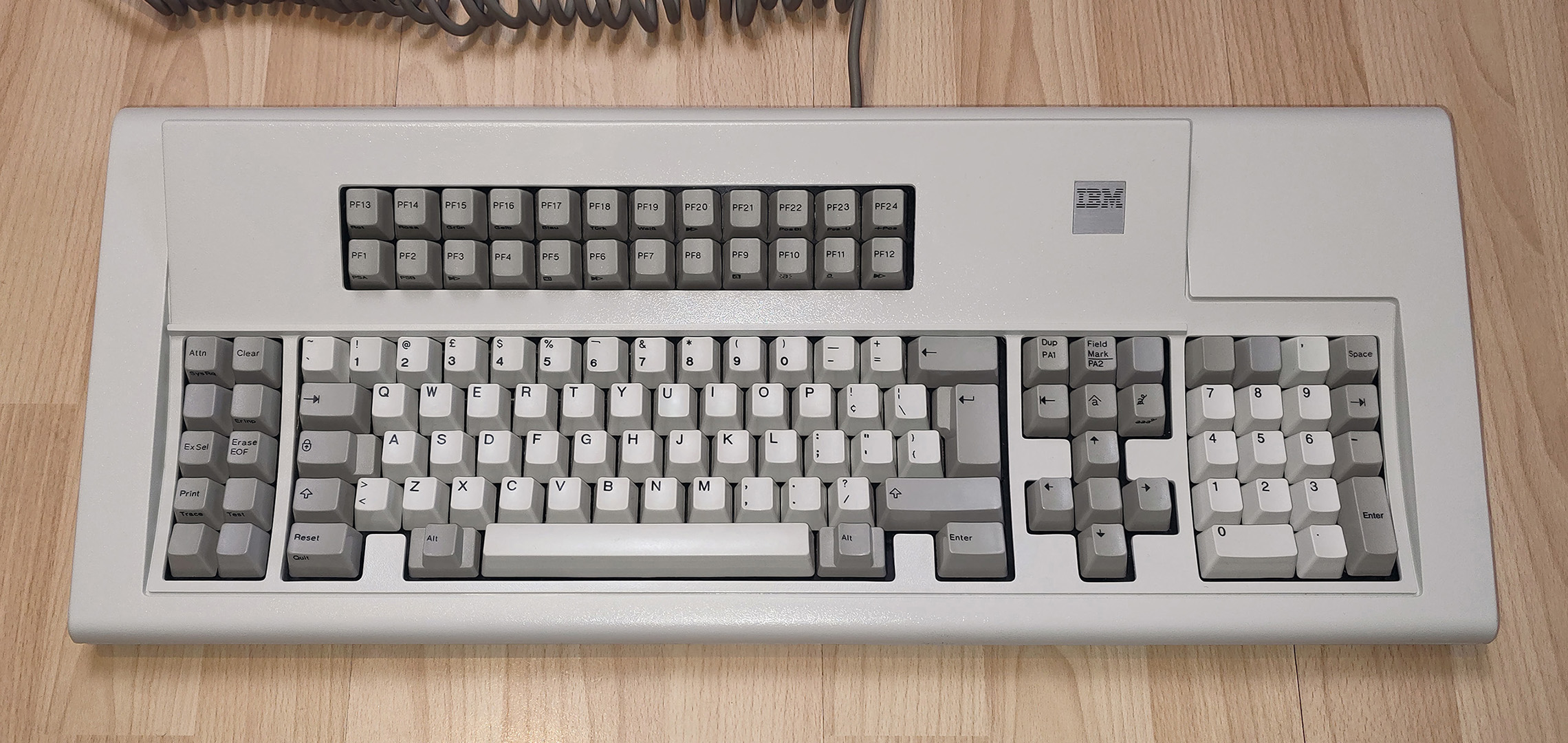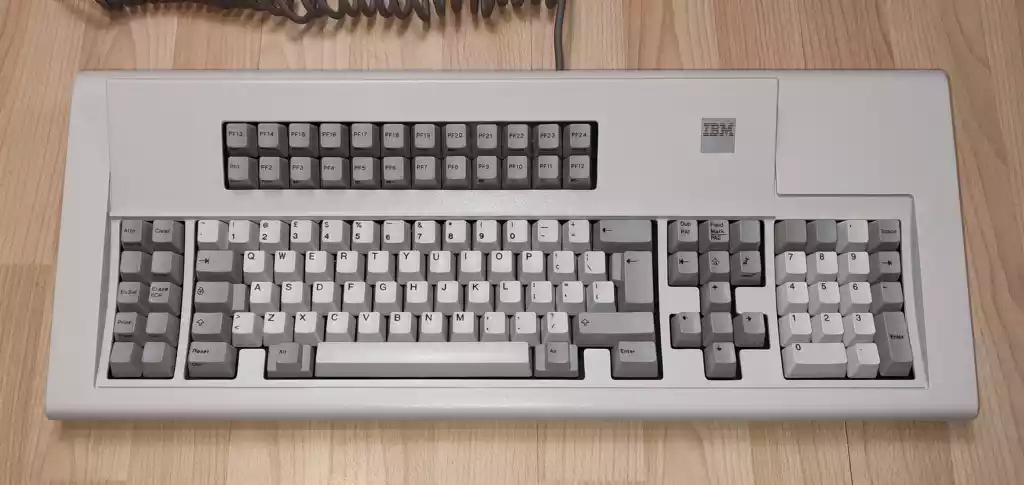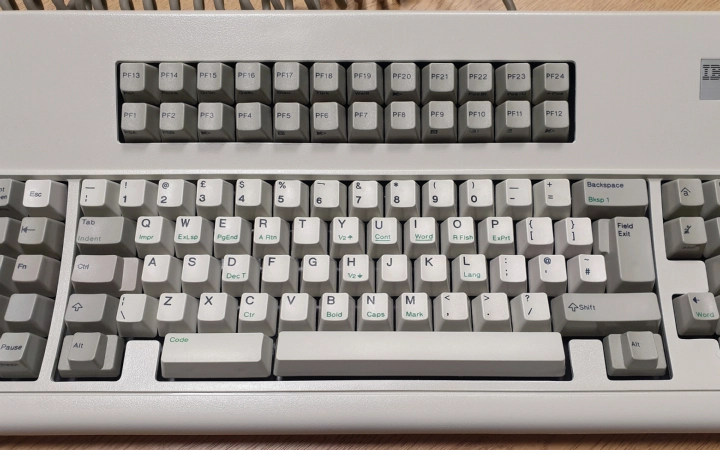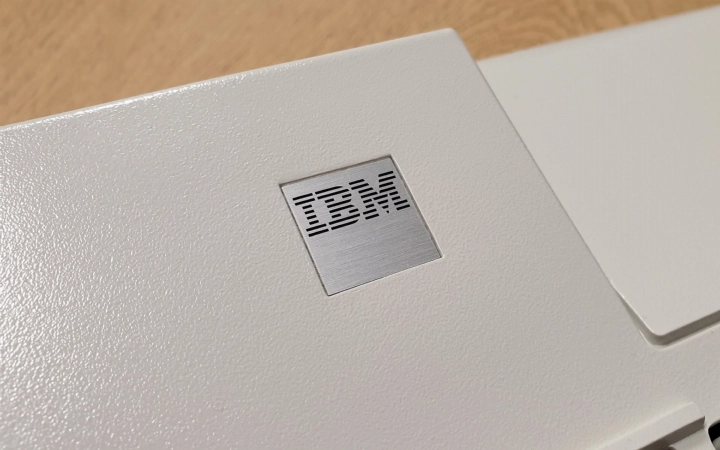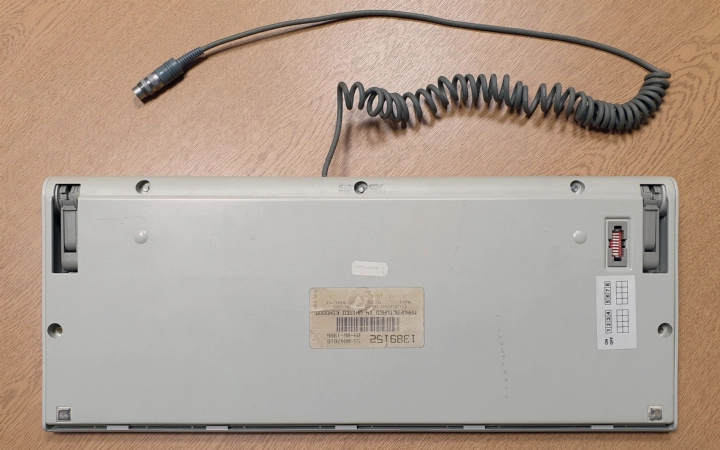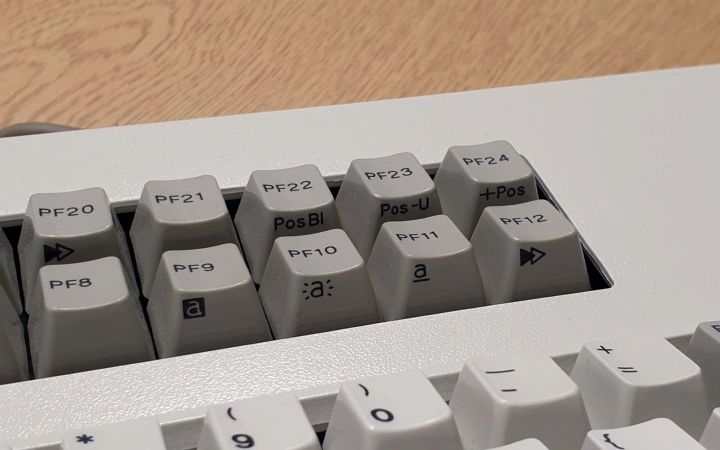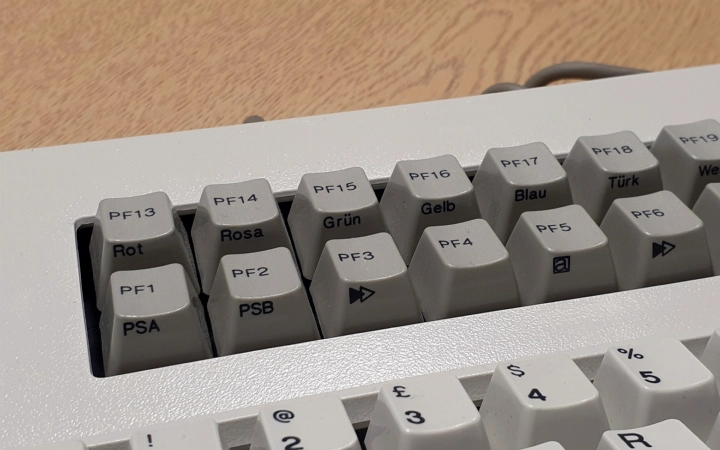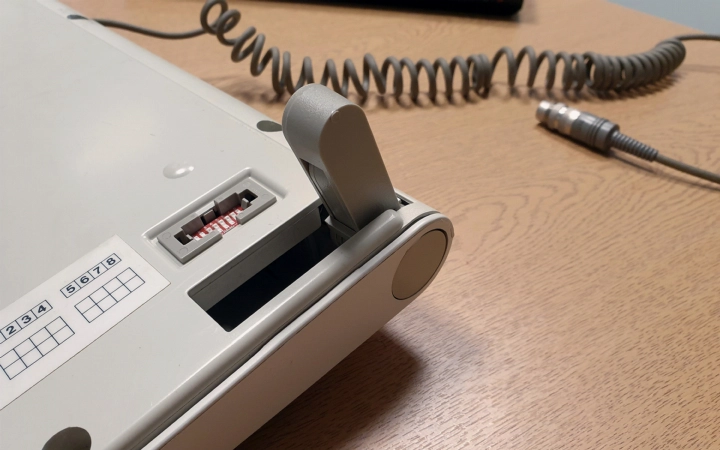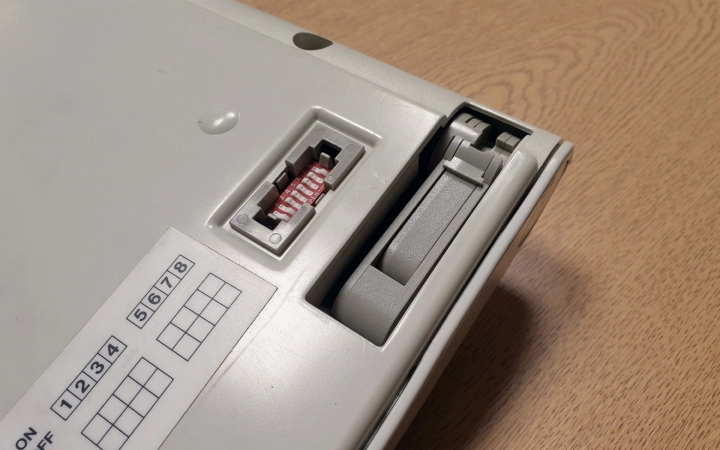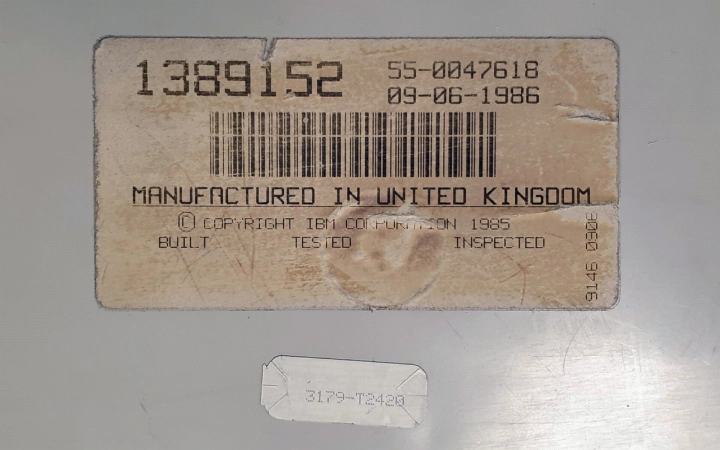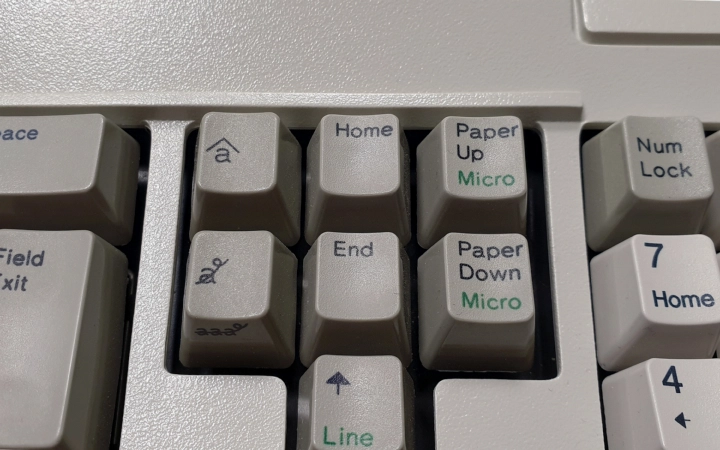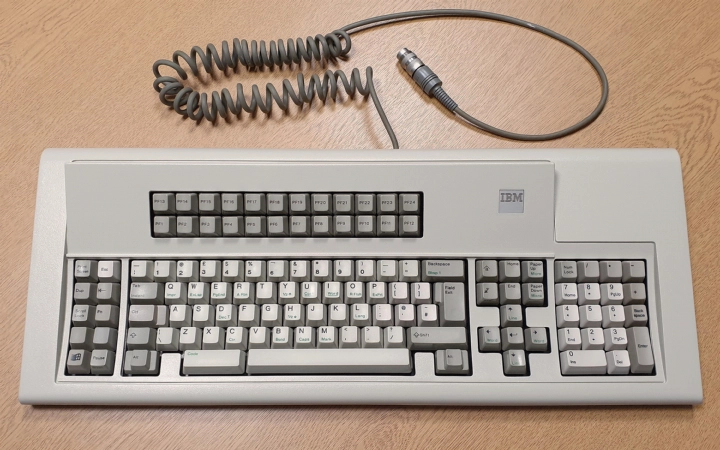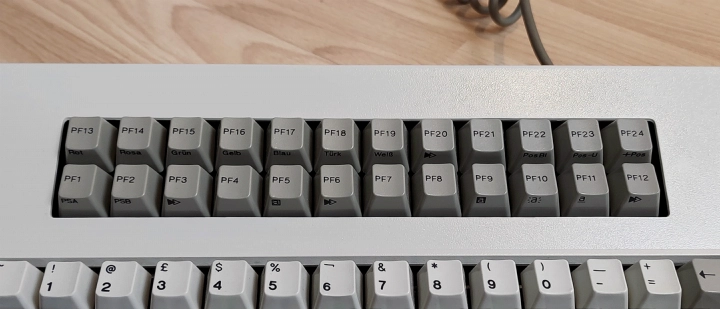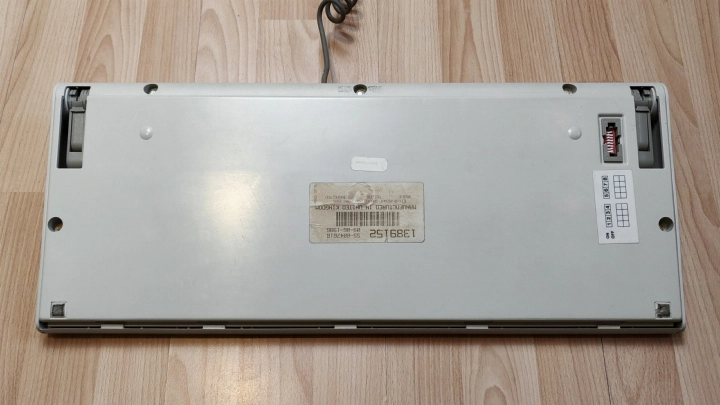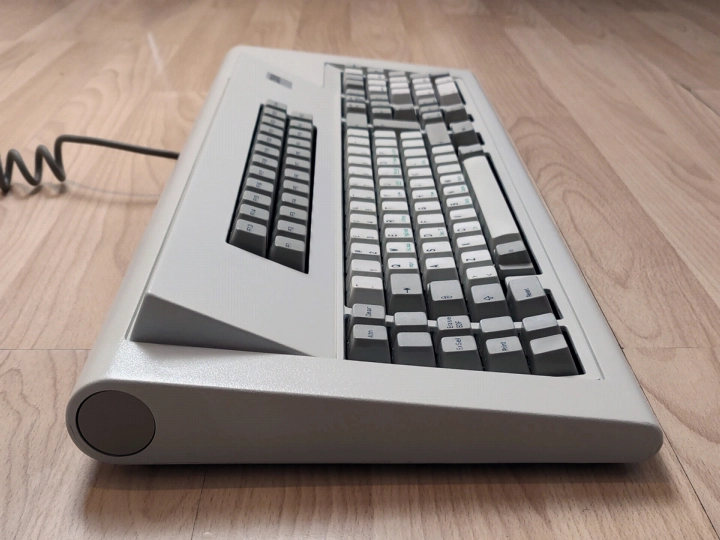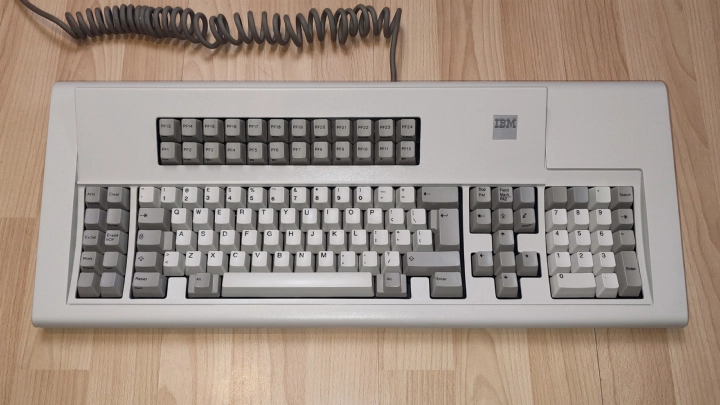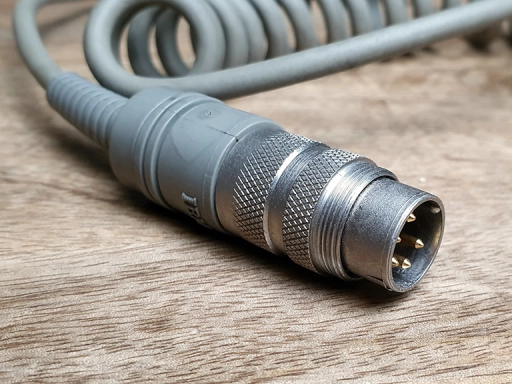SNKB-M1986-BT1-122
Notes
This battleship came with a yellowed case and several likely aftermarket worn pad-printed keycaps. I replaced the original case with a NOS case sourced from Unicomp. The original terminal-centric legends were largely replaced with a Wheelwriter keycap set recovered from a beyond recoverable keyboard assembly with some standard PC Enhanced Keyboard keycaps mixed in. The pearl Esc, and pebble Fn, stepped Ctrl, 1u backspace and old-style Windows logo keycaps were from Unicomp. I also performed an "Erase-Eaze" split-spacebar mod using the "Code" and spacebar keys sourced from the same aforementioned Wheelwriter assembly. This keyboard was also featured in my Differences between and classifications of 122-key Model Ms comparison topic.
| Full name | IBM 3179 Color Display Station Keyboard |
|---|---|
| Part number | 1389152 |
| Type | Model M/Model 1A Type I 122-key Converged Keyboard |
| Nickname | Battleship |
| Known host systems | IBM 3179 Model 1 Color Display Station (IBM 3270 family) |
| Keyswitches | IBM membrane buckling springs |
| Feet | Dual-setting riser feet |
| Date of production | 1986-06-09 |
| Date of acquisition | 2020-04-29 |
